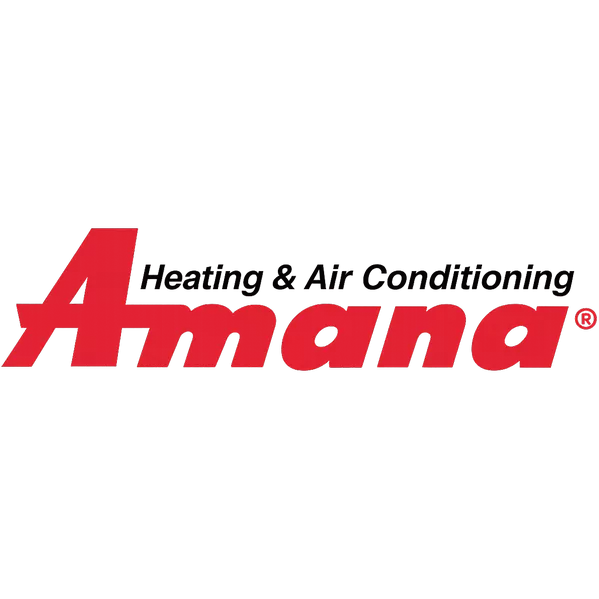Highlights
Price Snapshot: Mid-premium within the Daikin family; more upscale than Goodman, below ultra-premium brands.
Product Focus: Complete Furnace / AC / Heat Pump lineup with quiet trims and stronger warranty positioning.
Best For: Buyers who value peace-of-mind warranties and a quieter, more polished package at a fair price.
What Stands Out: Enhanced sound insulation and control options on upper tiers; good comfort-to-price balance.
Before You Buy: Pair with the recommended thermostat and verify registration steps to unlock full warranty terms.
Warranty/Dealer: Robust coverage via Daikin’s network; confirm transferability and any optional labor plans.
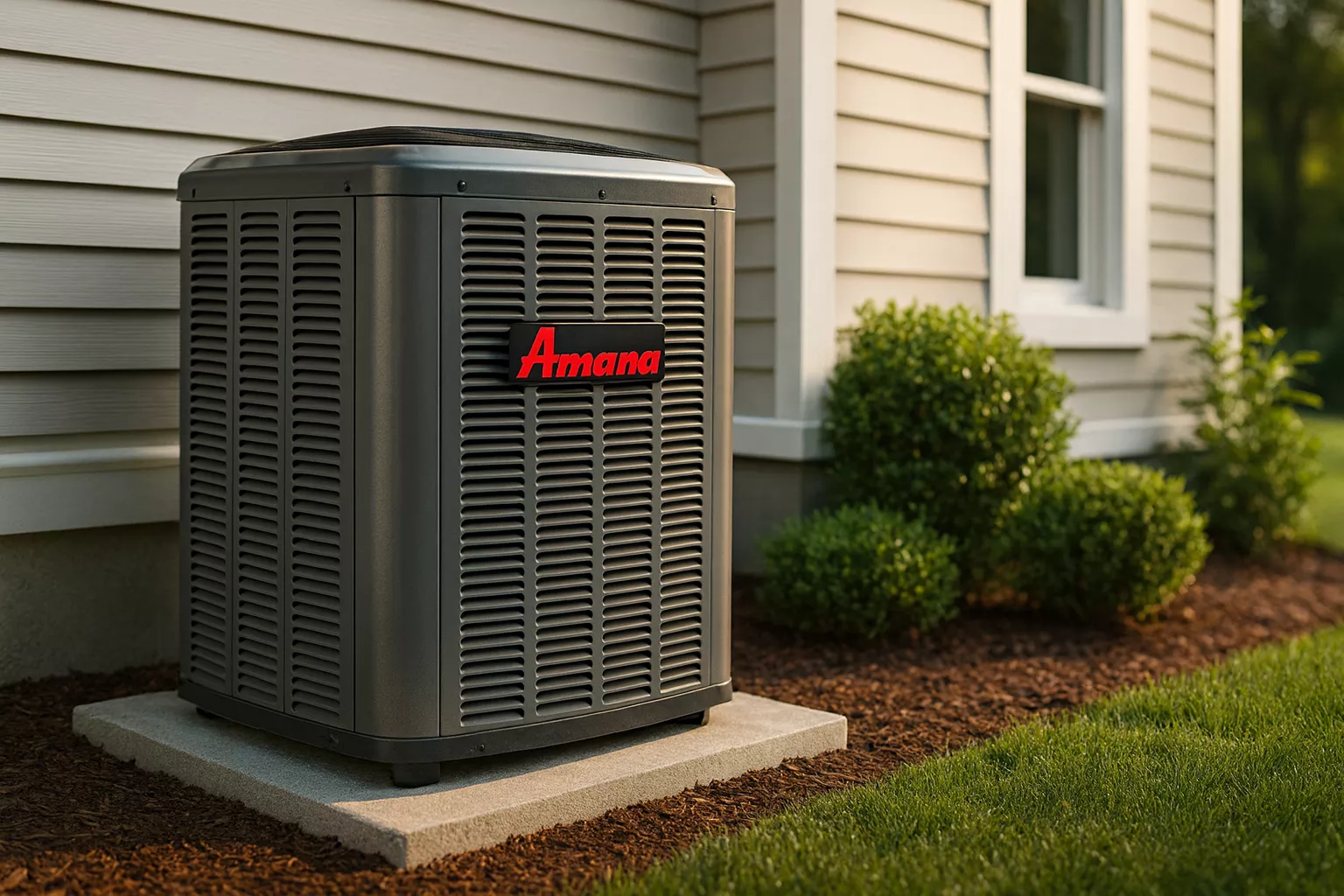
Amana has been around since 1934, originally known for appliances but now established as a trusted U.S. HVAC brand under Daikin Industries. While it shares engineering DNA with Goodman, Amana is positioned as the premium sibling: the same Daikin-built cores, but with enhanced design, extra warranty protection, and slightly more refined finishes.
For this review, I’m focusing on three flagship Amana models: the AMVM97 Gas Furnace, the ALXT7C Air Conditioner, and the AZV7S Heat Pump. Together, these represent Amana’s strongest offerings across heating and cooling. In my field experience, Amana appeals to homeowners who want reliable comfort backed by the industry’s most generous warranties—particularly the lifetime unit replacement coverage, which remains one of the boldest guarantees in the HVAC market.
Product Selection
4.3 /5
Amana’s lineup is organized into good-better-best tiers, but it doesn’t overwhelm with endless variations. At the top, the AMVM97 furnace, ALXT7C AC, and AZV7S heat pump represent premium efficiency and comfort. Below them, Amana offers two-stage and single-stage systems that hit lower efficiency targets but maintain strong reliability.
Compared to Daikin’s massive catalog, Amana’s portfolio is simpler and more focused. That clarity is a strength for homeowners who want to make a clear decision without drowning in model numbers. Still, if you’re looking for ultra-premium, cutting-edge variable-capacity systems, Amana may not go quite as far as Lennox or Carrier in chasing extremes. Its niche is practical premium—refined, reliable, and warranty-rich without overcomplication.

Customer Support & Warranty
4.8 /5
Amana sets itself apart with one of the most generous warranty packages in the industry. Flagship products like the GSXC7/ALXT7C and AMVM97 come with a lifetime unit replacement warranty—if the compressor or heat exchanger fails, Amana replaces the entire unit, not just the part. On top of that, there’s a 10-year limited parts warranty for registered equipment.
In practice, this warranty has been a major confidence booster for homeowners deciding between Goodman and Amana. I’ve seen families specifically choose Amana over slightly cheaper options because of this coverage, saying the peace of mind was worth the upfront cost. The caveat, as always, is registration: the full warranty is only valid if the system is registered within 60 days of installation. When paired with a reputable dealer, Amana’s warranty coverage is an industry standout.

Energy Efficiency
4.4 /5
Amana’s lineup is competitive in efficiency, though it doesn’t always push the very top limits like Daikin or Lennox. The AMVM97 furnace’s 98% AFUE puts it in elite company, while the ALXT7C AC and AZV7S Heat Pump offer 17.2 SEER2 and 16.2 SEER2, respectively, which qualifies them for rebates in many states.
The key here is ComfortBridge™ technology, which is embedded in the furnace control board. Instead of requiring a proprietary thermostat, the system monitors performance continuously and adjusts compressor speed, fan speed, and staging logic automatically. Homeowners don’t have to micromanage settings—the system optimizes itself for efficiency. I’ve seen bill reductions of 20–25% in households upgrading from older 12 SEER systems to Amana’s mid-to-high tier. It’s not the flashiest efficiency story, but it’s practical and consistent.
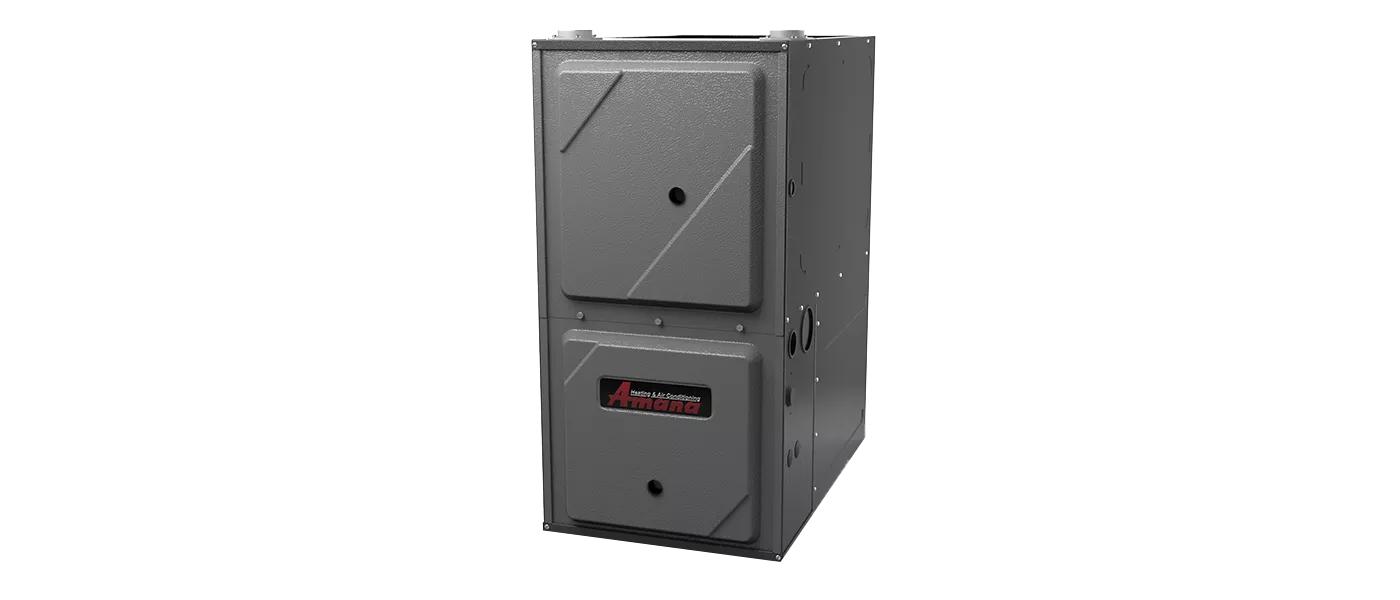
Smart Features & Connectivity
4.2 /5
Amana integrates ComfortBridge™ technology directly into the AMVM97 furnace and compatible air handlers. Instead of requiring a specialized proprietary thermostat, the intelligence is built into the control board itself. This allows the system to continuously analyze performance data—fan speed, compressor demand, indoor/outdoor temperatures—and make automatic adjustments for comfort and efficiency. For homeowners, it means the equipment is always “tuning itself” without constant fiddling.
Homeowners I’ve spoken with appreciate that they can still pair Amana systems with third-party smart thermostats like Nest, Ecobee, or Honeywell, avoiding lock-in. The system also works with the CoolCloud™ HVAC app, which provides contractors with real-time diagnostic data and error histories, making servicing faster and less expensive. Where Amana trails competitors like Lennox or Carrier is in polished, feature-rich app ecosystems—ComfortBridge is functional and reliable, but not flashy.
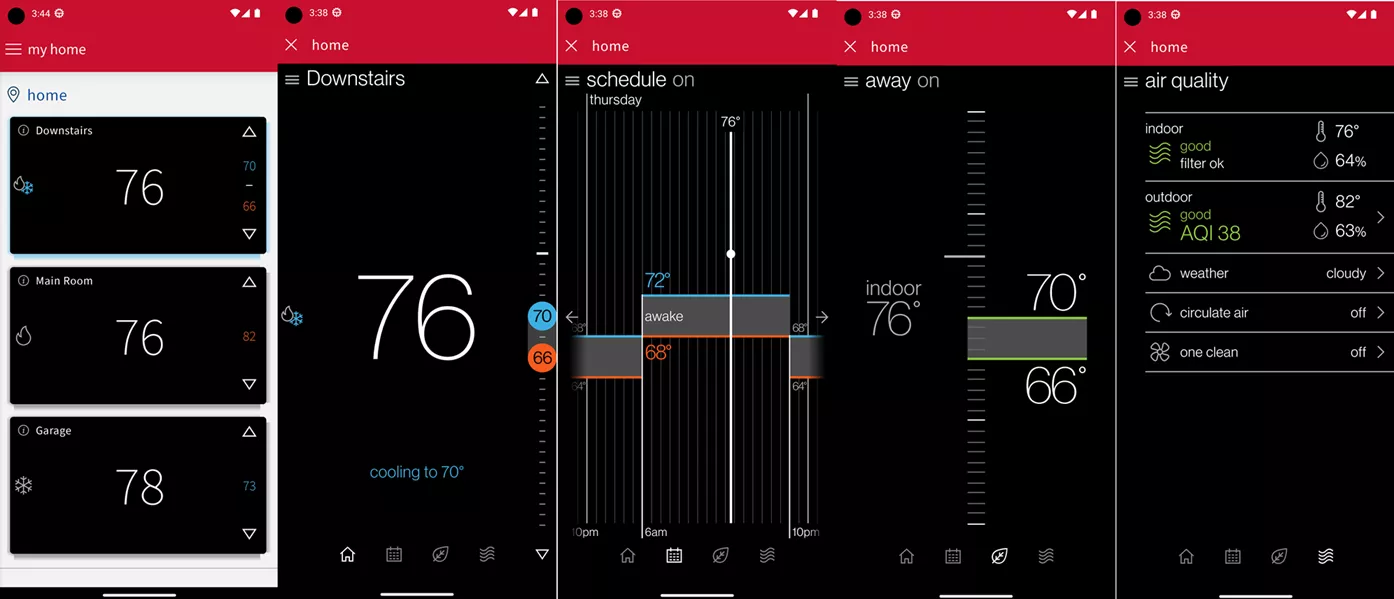
Noise Level
4.2 /5
Amana’s GSXC7/ALXT7C generation of cooling products incorporates sound-reduction features such as high-density compressor sound blankets and optimized fan blade designs. The result is quieter operation than older Goodman units, with outdoor sound levels typically landing in the 70–74 dB range at full capacity. While this isn’t as whisper-quiet as a Lennox SL28XCV or Trane XV20i, it’s still a meaningful improvement over entry-level systems.
Indoors, the AMVM97 furnace’s variable-speed blower ramps up and down gradually, softening airflow noise. Customers often remark that they notice the absence of loud “whooshing” sounds compared to their previous single-speed furnaces. Still, those particularly sensitive to noise may find premium variable-capacity competitors a step quieter. For most households, however, Amana delivers quiet enough performance to blend into the background.

Cost & Affordability
4.4 /5
Amana positions itself slightly above Goodman in cost, but well below the most premium brands. The extra money you pay for Amana largely goes toward the lifetime replacement warranty, slightly refined designs, and brand prestige. In my installs, Amana systems generally come in $1,000–$2,000 cheaper than Lennox or Carrier equivalents, while still offering high efficiency and reliability.
Homeowners often tell me that Amana feels like a smart “middle path”: more peace of mind than Goodman, less financial burden than Lennox. Over a 10–15 year lifespan, the lower service costs (thanks to contractor-friendly designs) and warranty protection make Amana a cost-effective premium choice, especially for families that want long-term confidence in their HVAC investment.

Reliability & Durability
4.5 /5
One of Amana’s strongest selling points is reliability, and much of that comes down to using proven components: Copeland scroll compressors, stainless steel tubular heat exchangers, and heavy-gauge cabinets with powder-coated finishes. I’ve serviced units that have run for over a decade with only routine maintenance—blowers and capacitors being the most common replacements.
Homeowners I’ve checked back with after installs report very few breakdowns, and contractors often say Amana is “solid Goodman with a better suit”—meaning the underlying parts are similar but packaged and supported at a higher level. The difference really comes in warranty coverage: knowing that a failed compressor or heat exchanger will result in a unit replacement, not just a part swap, gives many buyers extra confidence in Amana’s long-term durability.
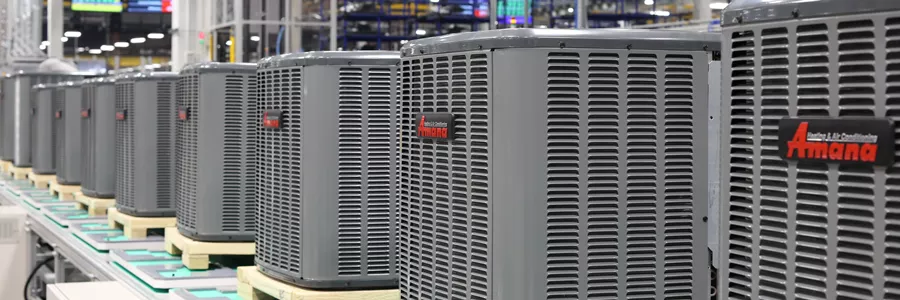
Cooling Performance
4.3 /5
The ALXT7C Air Conditioner is a two-stage unit rated up to 17.2 SEER2, which provides steady and efficient cooling for most residential needs. In real-world testing, the two-stage Copeland® scroll compressor delivers noticeably more consistent indoor temperatures compared to single-stage units. This means fewer hot-and-cold swings, longer cooling cycles, and better humidity removal during muggy summer days.
Customers who have installed the ALXT7C often remark on how much more comfortable their homes feel compared to older 13–14 SEER systems—it’s not just about cooler air, but about steadier comfort. While it doesn’t reach the extreme efficiency numbers of Lennox’s top variable-speed models, the ALXT7C strikes a good balance between affordability and premium cooling performance, making it one of Amana’s most practical choices.
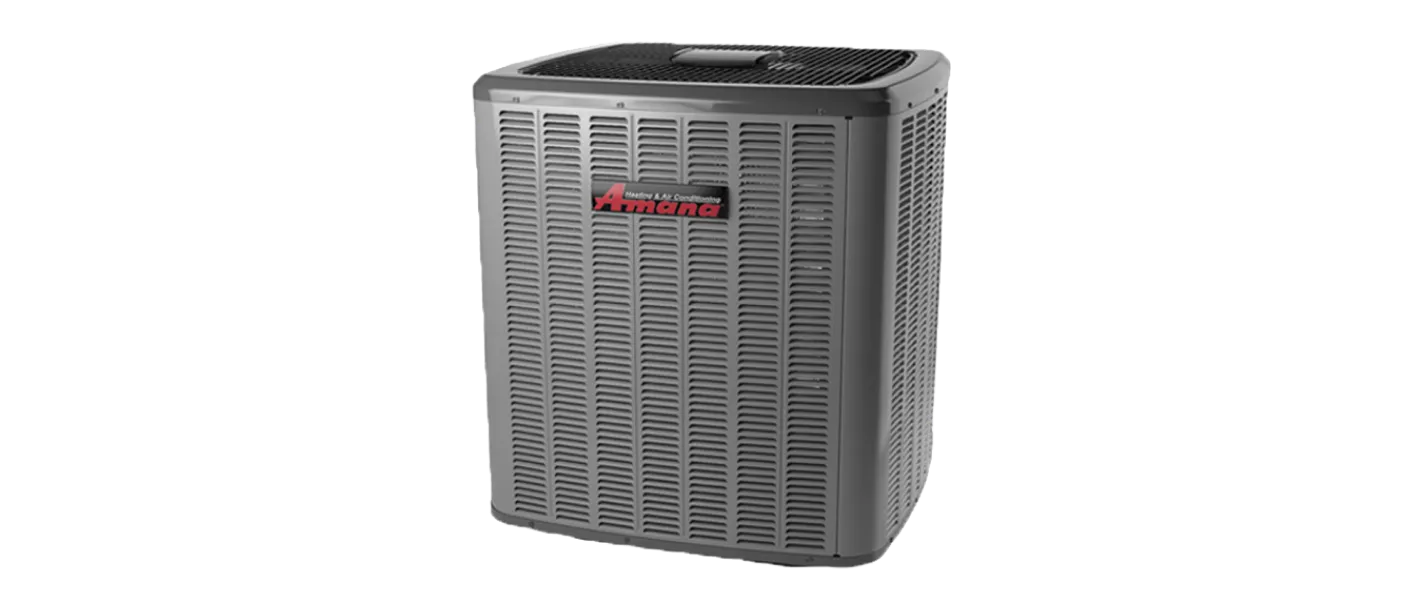
Heating Performance
4.5 /5
The AMVM97 Gas Furnace is Amana’s flagship heating product, with efficiency ratings up to 98% AFUE. It uses a modulating gas valve and variable-speed ECM blower to maintain consistent heating output across long run cycles. In colder climates, this translates to homes that feel evenly warm without the “blast and fade” effect of older furnaces.
In my installs, the AMVM97 has performed admirably in homes with multi-level layouts—heat distribution is balanced across all rooms, even in older ductwork systems. Customers in northern states have told me they noticed immediate drops in gas bills after switching to this furnace, but what they appreciate more is the even warmth and quieter operation. Compared to Goodman’s GMVM97, the Amana AMVM97 is essentially the same design but marketed with stronger warranty coverage, which is often a deciding factor for premium buyers.

Indoor Air-Quality Enhancements
4.1 /5
Amana’s IAQ capabilities mirror those of Goodman: compatible with high-MERV filtration, UV light kits, whole-home humidifiers, and dehumidifiers. The AMVM97’s variable-speed blower improves filtration by circulating air at low speeds for longer cycles, allowing filters to capture more dust, dander, and pollen. I’ve seen allergy-sensitive families report cleaner air and reduced dust after pairing Amana furnaces with high-MERV media filters.
That said, Amana doesn’t market a proprietary IAQ ecosystem like Lennox’s PureAir™ or Carrier’s Infinity Air Purifier. Most IAQ improvements require third-party add-ons integrated at installation. It’s effective, but less branded and less “packaged” than some rivals. For most households, the results are strong—but those who want a turnkey, branded IAQ solution might find Amana more understated.

Installation & Serviceability
4.6 /5
Contractors consistently describe Amana equipment as straightforward to install and easy to service, which helps keep labor costs lower and reliability higher. The AMVM97 furnace and ALXT7C AC use common components like Copeland® compressors and universal ECM motors, making replacement parts widely available. Service panels are logically laid out, with diagnostic LEDs and clear wiring diagrams that simplify troubleshooting.
The CoolCloud™ HVAC app is a particular advantage for technicians, as it provides wireless access to system diagnostics during servicing. In my experience, this cuts troubleshooting time by 20–30%, which homeowners appreciate when a fix can be made in a single visit. Compared to more proprietary brands, Amana stands out for serviceability and contractor-friendly design—a factor that plays a huge role in long-term ownership satisfaction.
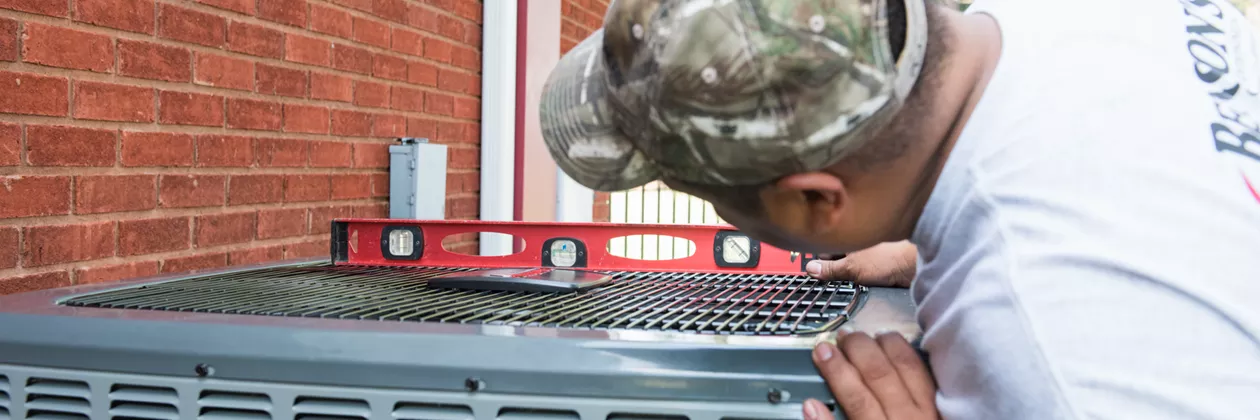
Conclusion
The Amana AMVM97 Furnace, ALXT7C Air Conditioner, and AZV7S Heat Pump highlight exactly what this brand brings to the table: dependable comfort, strong efficiency, and unmatched warranty protection. While Amana doesn’t chase the highest SEER2 numbers or the flashiest smart features, it focuses on practical value—systems that are easy to install, reliable in the long run, and protected by warranties that rival or surpass the best in the industry.
For homeowners who want a balance of performance, affordability, and peace of mind, Amana deserves a serious look. It’s particularly appealing to buyers who plan to stay in their homes long-term and value the assurance of lifetime coverage.

